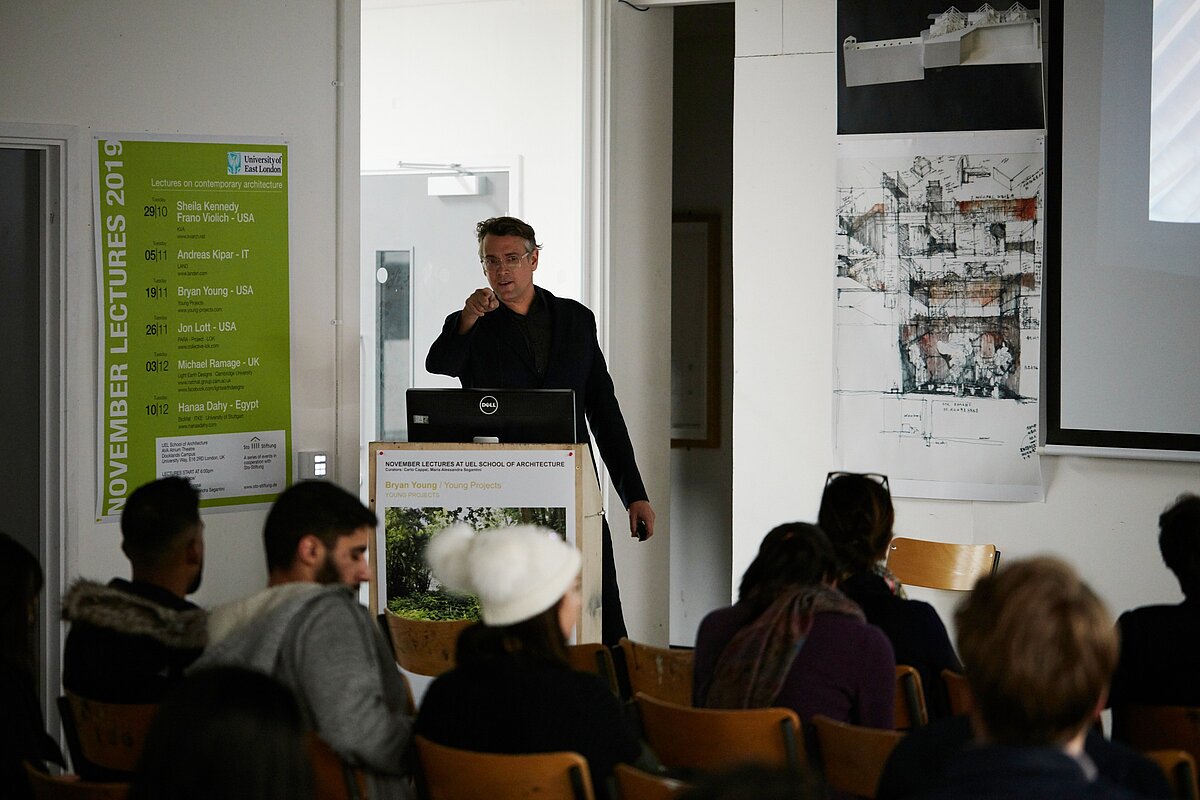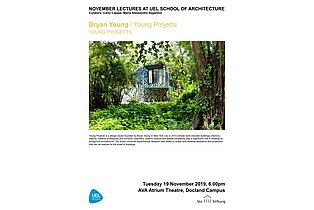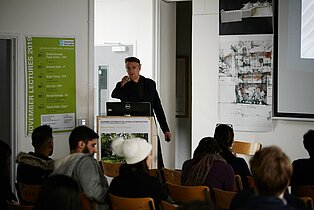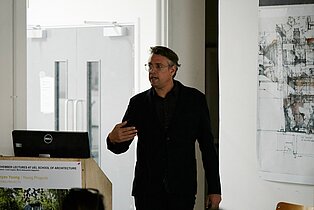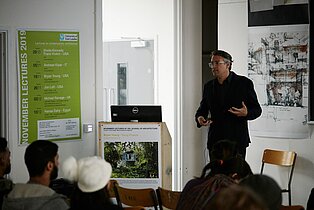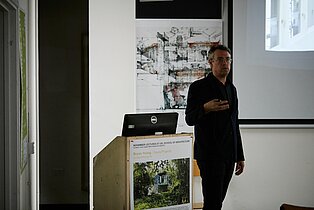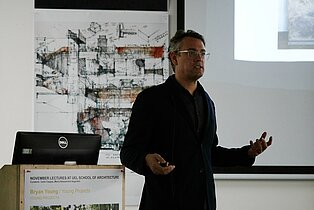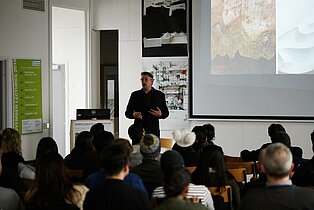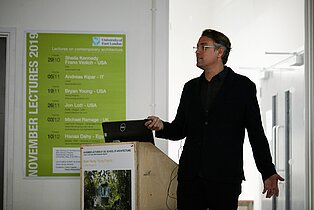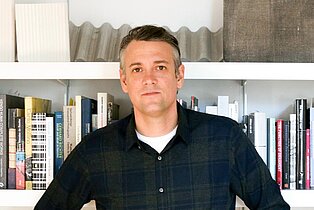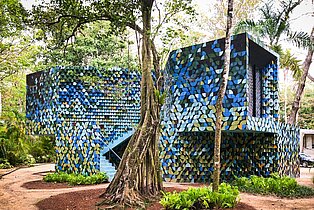Review | Bryan Young in London
The third November Lecture at the UEL School of Architecture was delivered by Bryan Young, founder of Young Projects in New York. Young Projects’ work, which includes buildings, interiors, objects, and furniture, has been widely published and received numerous awards including The Architectural League of New York’s Prize. The practice featured in Architect’s Newspaper’s top 50 interior architects in 2018 and 2019.
The focus of the lecture was on the practice’s material prototyping, and its experimental approach to traditional fabrication techniques. Young emphasised that in a post-digital age, where architects are used to controlling every aspect of a project’s design, the practice embraces unpredictable and disruptive elements that lend unmediated aesthetic qualities, and bring fun, excitement and chance to the creative process.
Young explained the practice itself is ten people in size, and so while ideas about how materials might behave take place within the studio, affiliated contractors and artisans assist in hands-on research to investigate material properties, always embracing a trial and error approach within their methodology. He explained that a material investigation that relates to a particular project often becomes a prototype with relevance across the discipline.
To begin, Young shared the process behind the creation of cast aluminium panels for an apartment in Tribeca, New York, which resulted from experimentations in casting aluminium with burlap. The resulting panels carry a graphic record of the chemical reaction of the molten aluminium as it burns the material away at varying rates, according to temperature and flow, as its travels through the casting mould.
Young then shared the material experimentation behind the sculpted plaster panels for a loft apartment in Tribeca. The practice worked with an artisan New York plasterer, manipulating the technique of pulled plaster, whereby a knife is pulled by hand to extrude plaster across a table, to generate digital-esque results from a traditional technique. Young shared images of the monolithic panels in situ, describing their tactility and sensibility, owing to the movement of shadows and light across the surfaces.
Young then presented a polished stainless steel screen created by the practice for the same apartment. From certain perspectives the screen’s panels shield spaces from one another via opaque reflection, whilst from others they reveal an aperture and transparency between living spaces, so that the apartment can be both an intimate and a public event space.
Young moved on to present a series of projects for a retreat in the Dominican Republic, including a yoga pavilion, guesthouse, and spa, with hammam, steam, massage, sauna, and plunge pool. Presented as a unified mass, he described the geometry of the spa, as dictated by the unique programmes, with the hammam above ground, the steam room underground, and the massage area open-air. Young explained the material innovations behind the spa project, which is built from twice-baked concrete, made from an aggregate of coloured concrete, then sandcast and chiselled. He explained the material ambiguity that arises from the form, which could be interpreted as a windswept geological formation, or a highly composed, contemporary architectural intervention on the landscape.
Young went on to explain the material properties of the Glitch House, which is made from locally produced concrete blocks, staggered and stacked with a chamfered edge, and finished with coloured tiles, occasionally flipped and rotated to disrupt the graphic. He explained the discovery that the shadows formed in the 45-degree geometry read in a unusual way, so that from a distance the house, designed for yoga instructors, appears as pixelated, and camouflaged into the jungle.
Young then shared images revealing the construction techniques used to create The Lodge, which has a complex, fluid form, and a highly sculptural roof with a central ridge that descends and rises. He shared the ideas of circulation, programming, landscape and sustainability that informed the design of the house, and its relation to the surrounding environment. He then presented the yoga pavilion, designed around a raised affinity pool, and the guesthouse, articulated around two pre-existing trees.
Young also shared competition entries by the practice, including a Valentine Heart sculpture for Times Square, designed to help people find a cosmically compatible partners via a series of intertwined periscopes, and a design for the New York avant garde art institution, The Kitchen, including a highly charged architectural performance space.
Young briefly touched on the Carraig Ridge Fireplace project in Alberta, Canada, and a project in the Hamptons, featuring a series of three wells: a salt bath, a sound bath and a kiva, plus Six Square House in Bridgehampton, New York, which embraces spatial ambiguity and rethinks traditional living typologies. Young closed the lecture by sharing contemporary material experiments taking place within the practice with ceramics and salt crystals, which could inspire projects of the future.
Interview-Video
Bryan Young spoke about his lecture at the November Talks in London.


